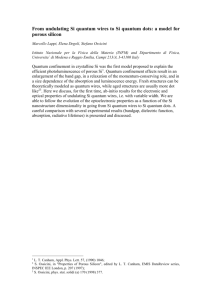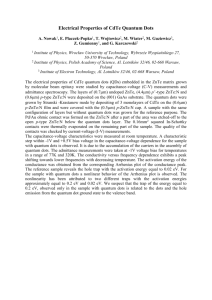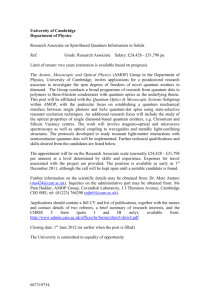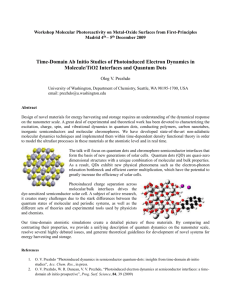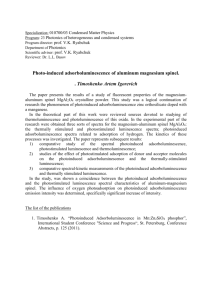Influence of in-gap trap state in infrared quantum dots on their
advertisement
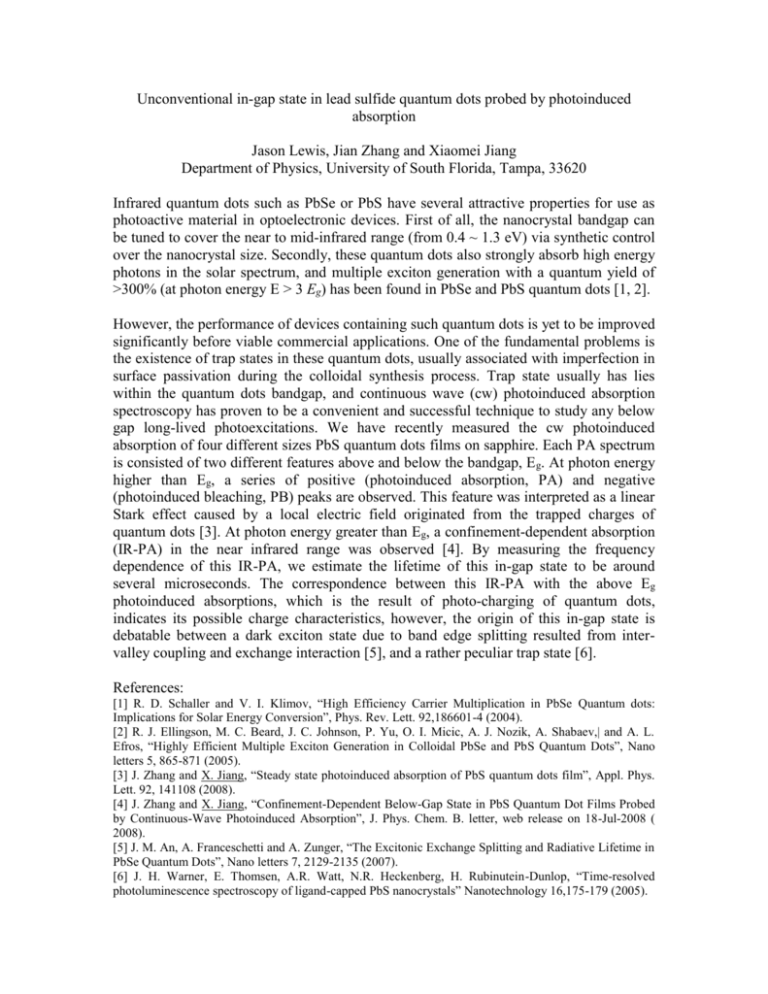
Unconventional in-gap state in lead sulfide quantum dots probed by photoinduced absorption Jason Lewis, Jian Zhang and Xiaomei Jiang Department of Physics, University of South Florida, Tampa, 33620 Infrared quantum dots such as PbSe or PbS have several attractive properties for use as photoactive material in optoelectronic devices. First of all, the nanocrystal bandgap can be tuned to cover the near to mid-infrared range (from 0.4 ~ 1.3 eV) via synthetic control over the nanocrystal size. Secondly, these quantum dots also strongly absorb high energy photons in the solar spectrum, and multiple exciton generation with a quantum yield of >300% (at photon energy E > 3 Eg) has been found in PbSe and PbS quantum dots [1, 2]. However, the performance of devices containing such quantum dots is yet to be improved significantly before viable commercial applications. One of the fundamental problems is the existence of trap states in these quantum dots, usually associated with imperfection in surface passivation during the colloidal synthesis process. Trap state usually has lies within the quantum dots bandgap, and continuous wave (cw) photoinduced absorption spectroscopy has proven to be a convenient and successful technique to study any below gap long-lived photoexcitations. We have recently measured the cw photoinduced absorption of four different sizes PbS quantum dots films on sapphire. Each PA spectrum is consisted of two different features above and below the bandgap, Eg. At photon energy higher than Eg, a series of positive (photoinduced absorption, PA) and negative (photoinduced bleaching, PB) peaks are observed. This feature was interpreted as a linear Stark effect caused by a local electric field originated from the trapped charges of quantum dots [3]. At photon energy greater than Eg, a confinement-dependent absorption (IR-PA) in the near infrared range was observed [4]. By measuring the frequency dependence of this IR-PA, we estimate the lifetime of this in-gap state to be around several microseconds. The correspondence between this IR-PA with the above Eg photoinduced absorptions, which is the result of photo-charging of quantum dots, indicates its possible charge characteristics, however, the origin of this in-gap state is debatable between a dark exciton state due to band edge splitting resulted from intervalley coupling and exchange interaction [5], and a rather peculiar trap state [6]. References: [1] R. D. Schaller and V. I. Klimov, “High Efficiency Carrier Multiplication in PbSe Quantum dots: Implications for Solar Energy Conversion”, Phys. Rev. Lett. 92,186601-4 (2004). [2] R. J. Ellingson, M. C. Beard, J. C. Johnson, P. Yu, O. I. Micic, A. J. Nozik, A. Shabaev,| and A. L. Efros, “Highly Efficient Multiple Exciton Generation in Colloidal PbSe and PbS Quantum Dots”, Nano letters 5, 865-871 (2005). [3] J. Zhang and X. Jiang, “Steady state photoinduced absorption of PbS quantum dots film”, Appl. Phys. Lett. 92, 141108 (2008). [4] J. Zhang and X. Jiang, “Confinement-Dependent Below-Gap State in PbS Quantum Dot Films Probed by Continuous-Wave Photoinduced Absorption”, J. Phys. Chem. B. letter, web release on 18-Jul-2008 ( 2008). [5] J. M. An, A. Franceschetti and A. Zunger, “The Excitonic Exchange Splitting and Radiative Lifetime in PbSe Quantum Dots”, Nano letters 7, 2129-2135 (2007). [6] J. H. Warner, E. Thomsen, A.R. Watt, N.R. Heckenberg, H. Rubinutein-Dunlop, “Time-resolved photoluminescence spectroscopy of ligand-capped PbS nanocrystals” Nanotechnology 16,175-179 (2005).

